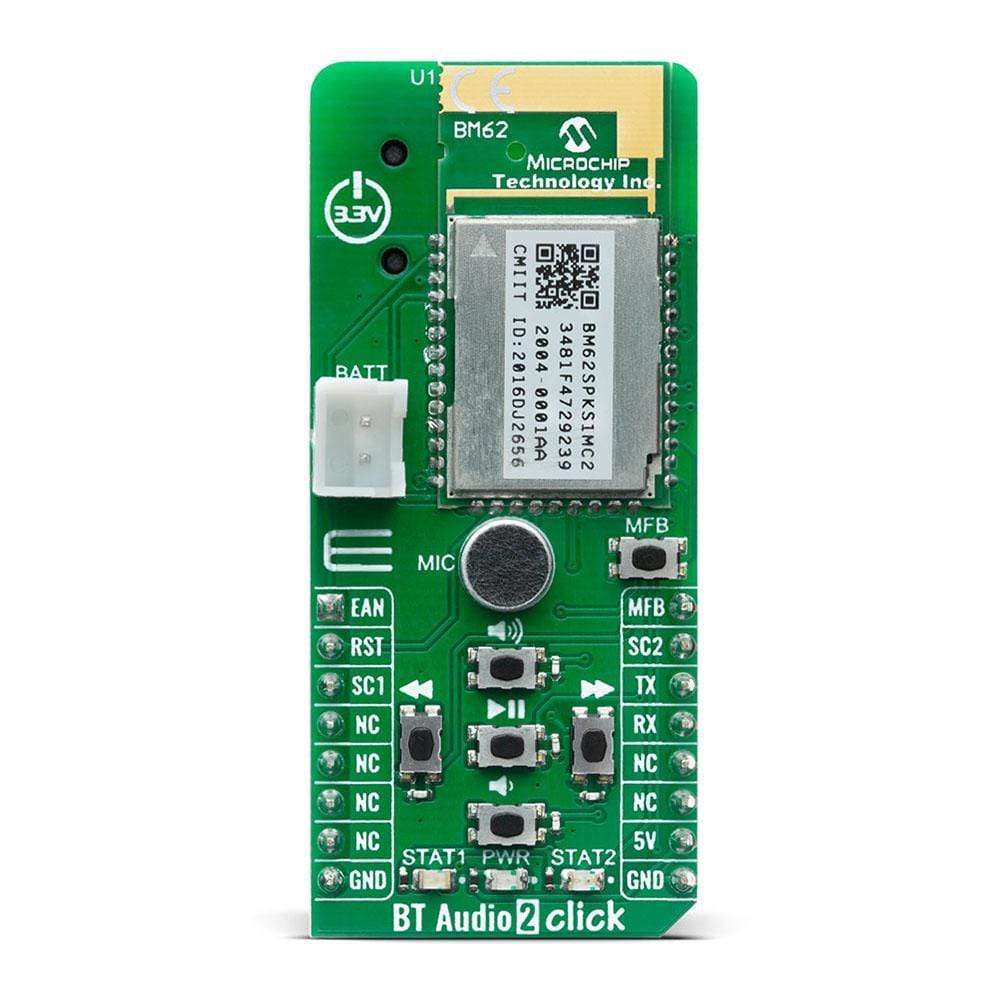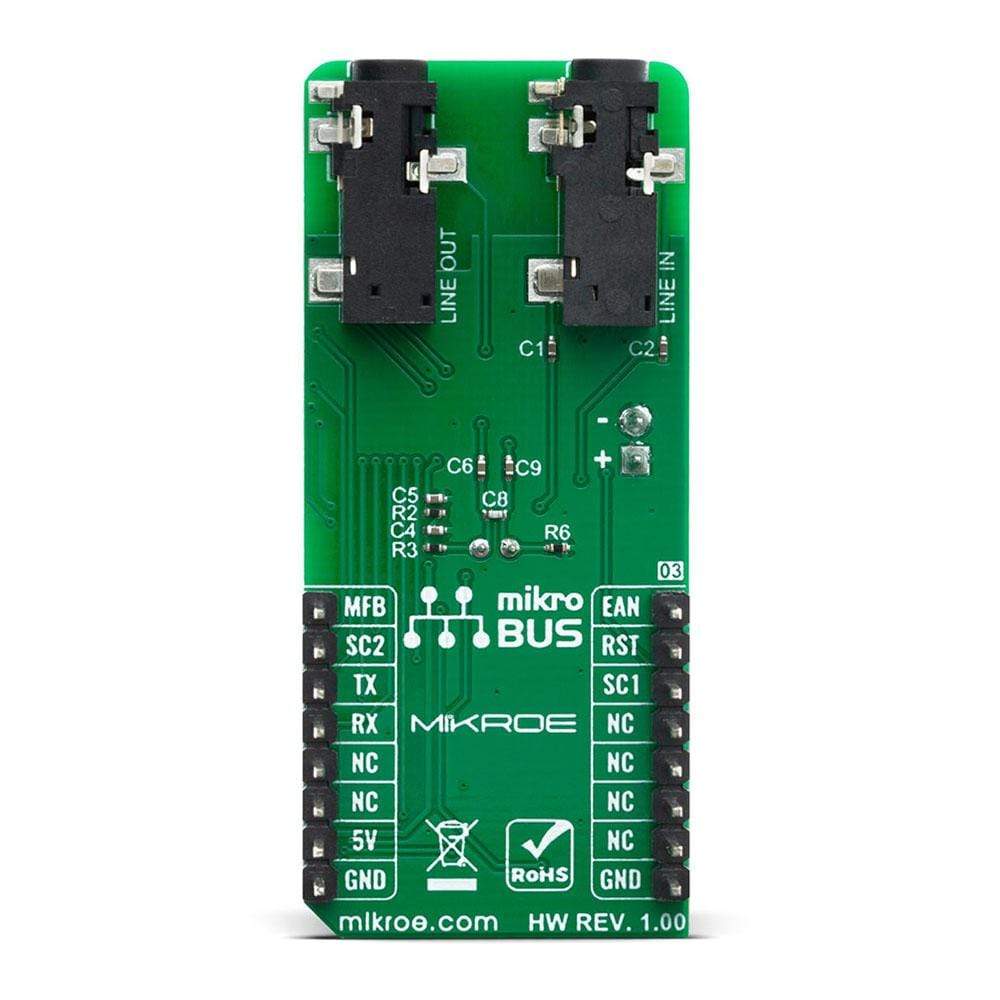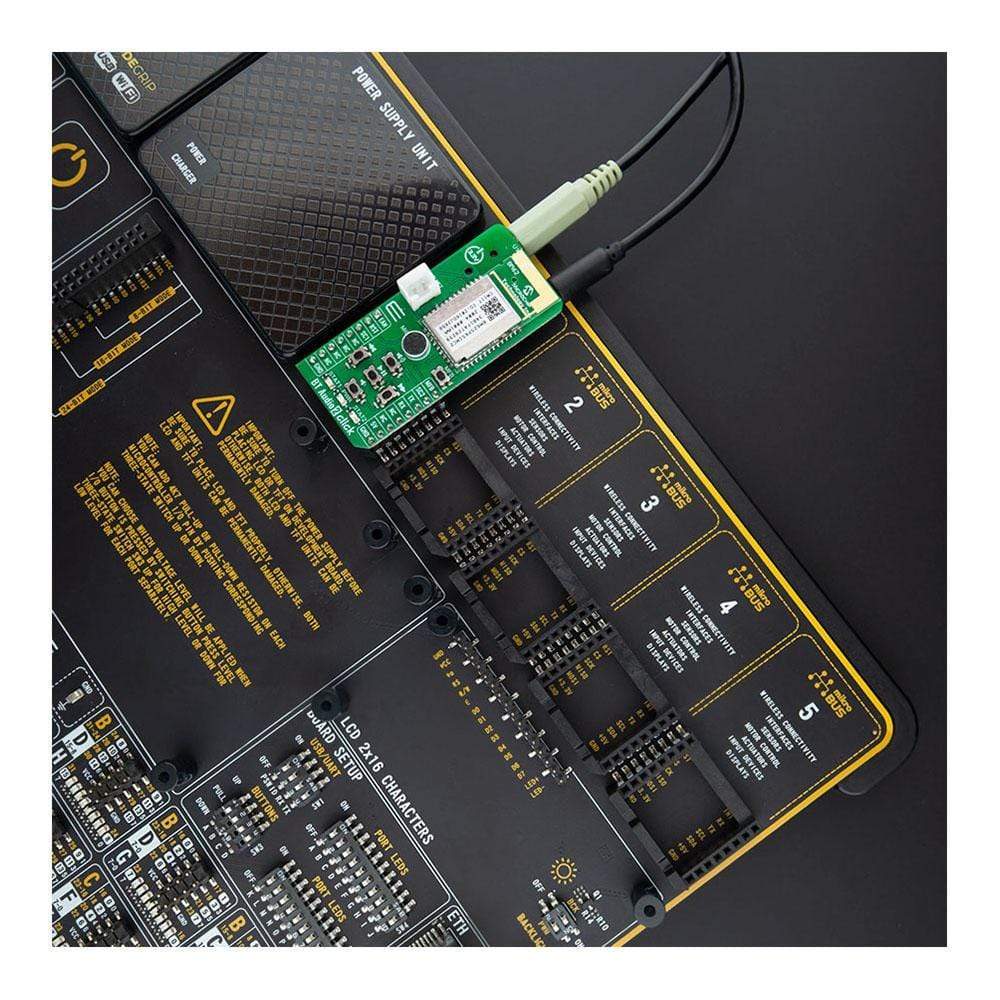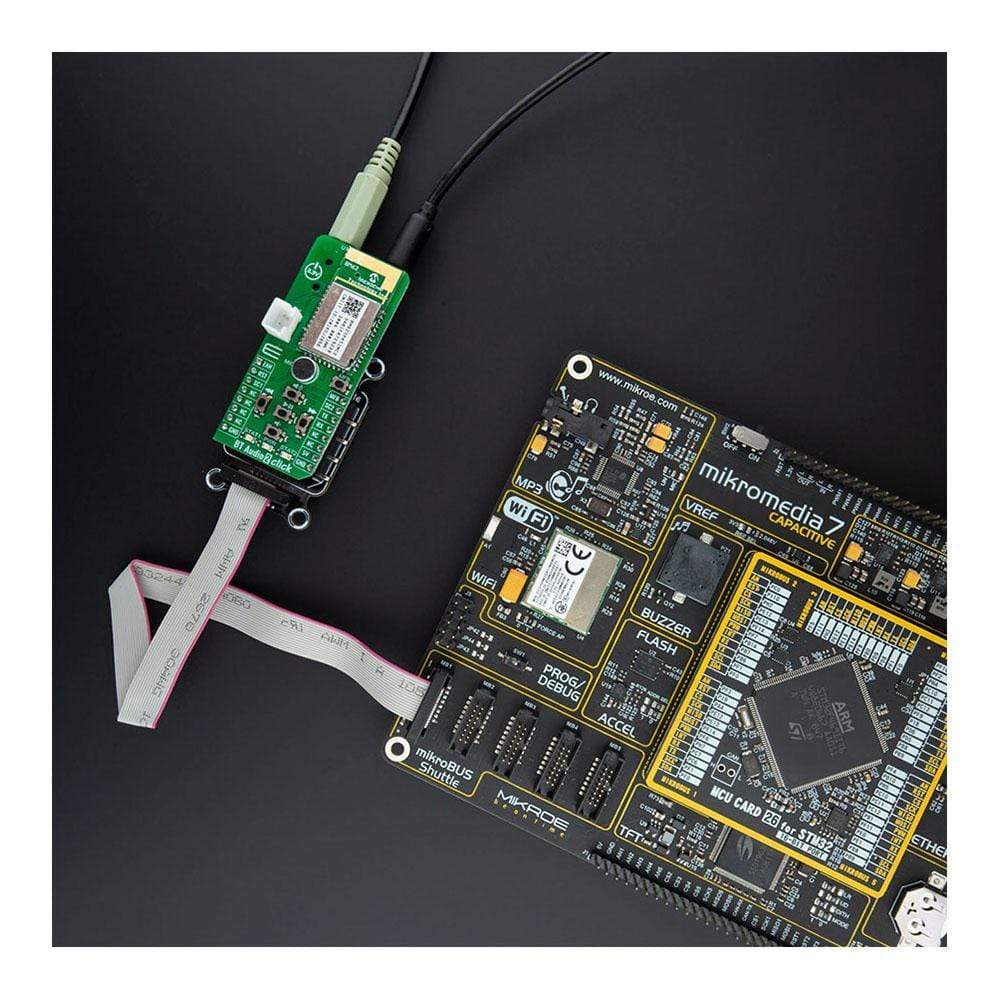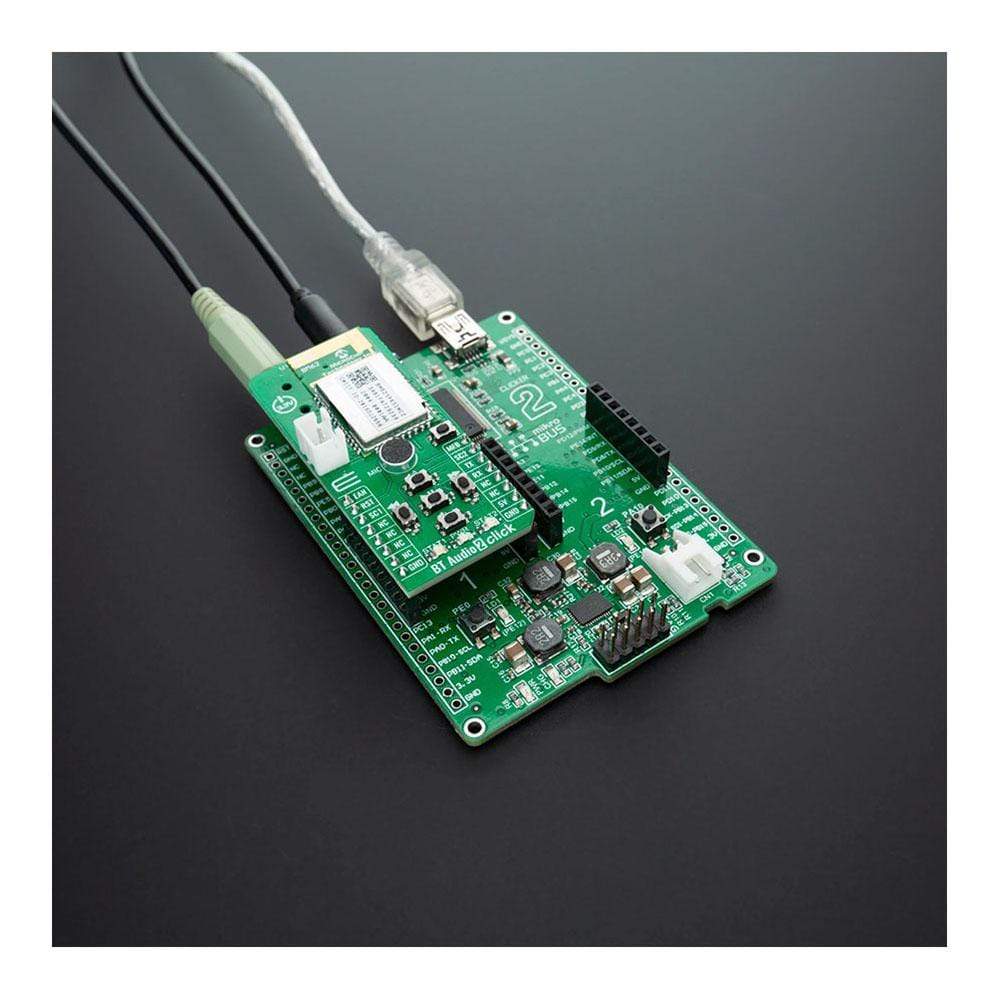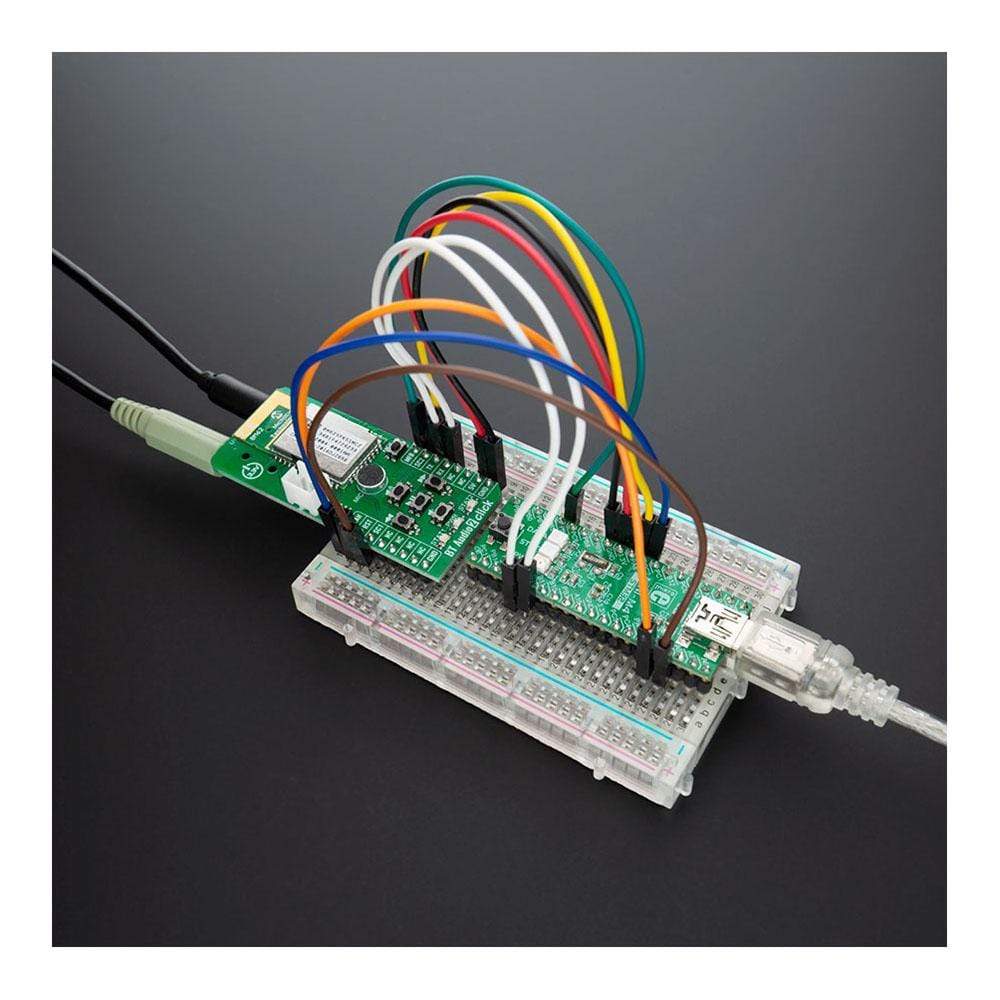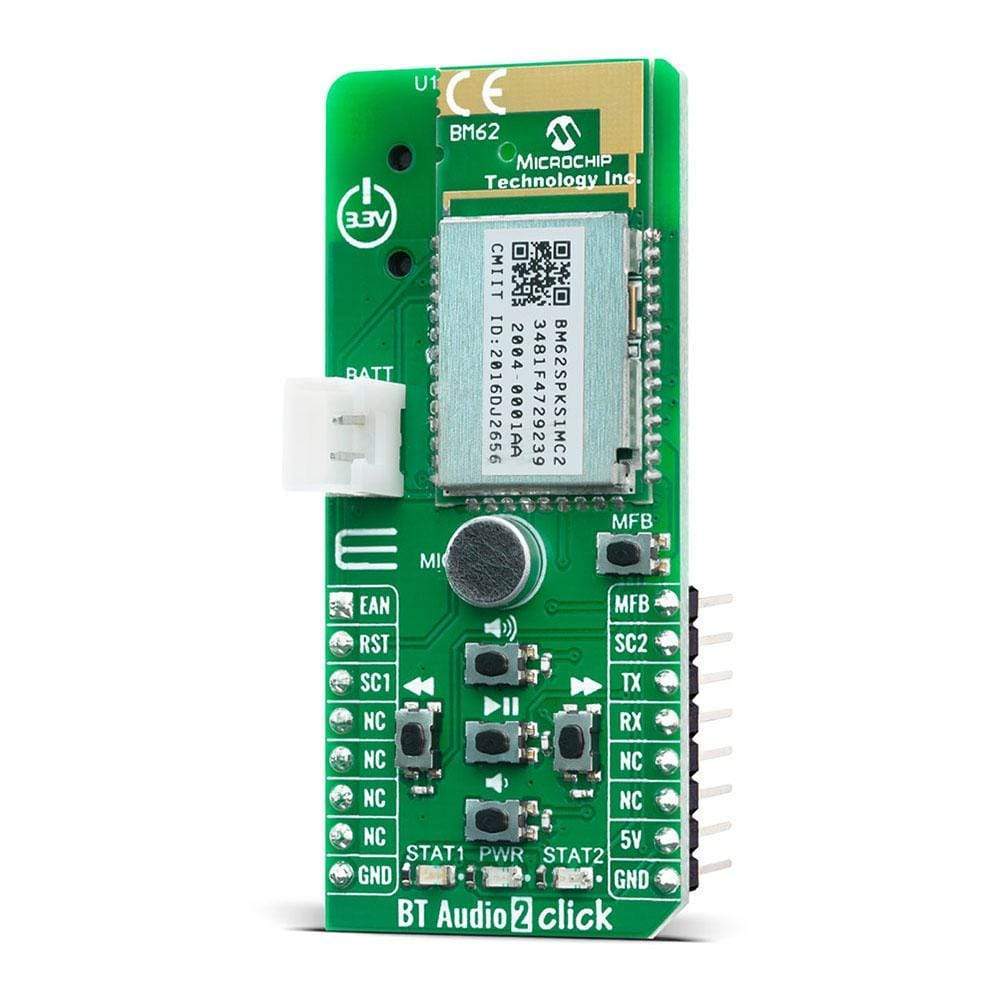
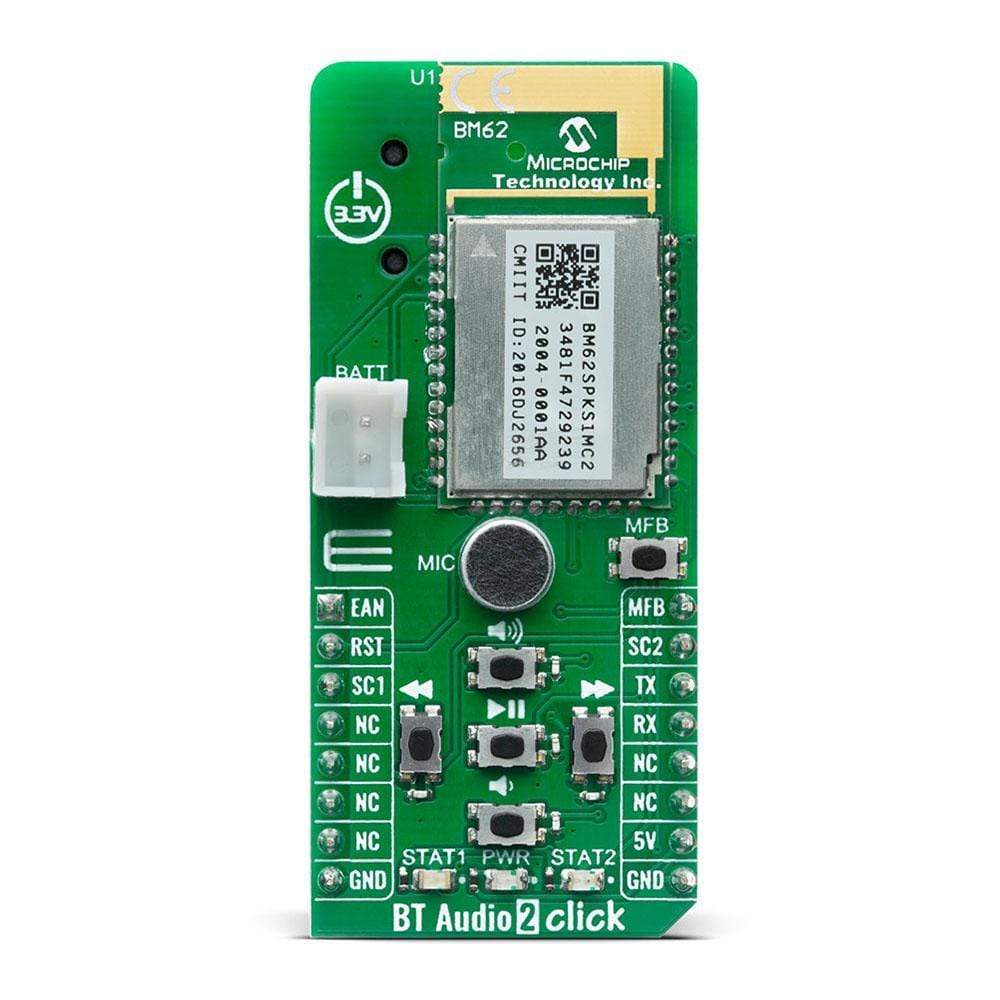
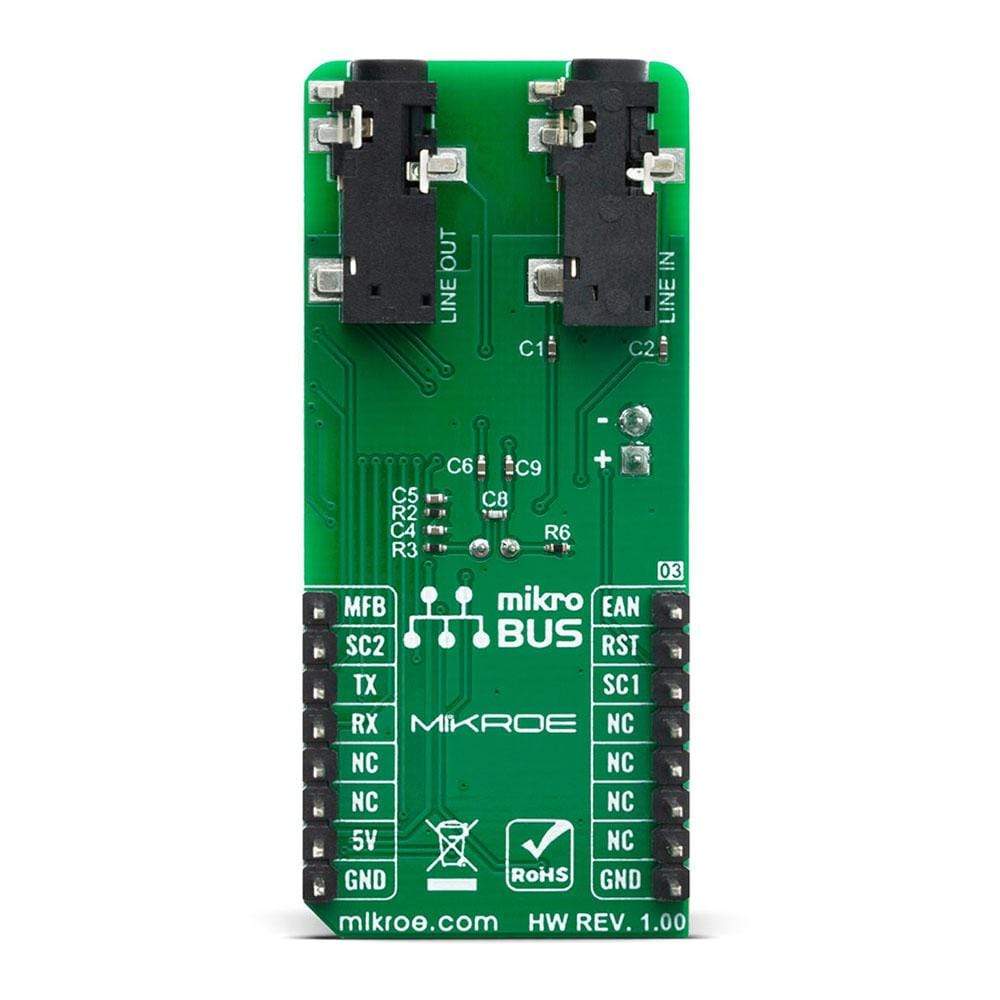
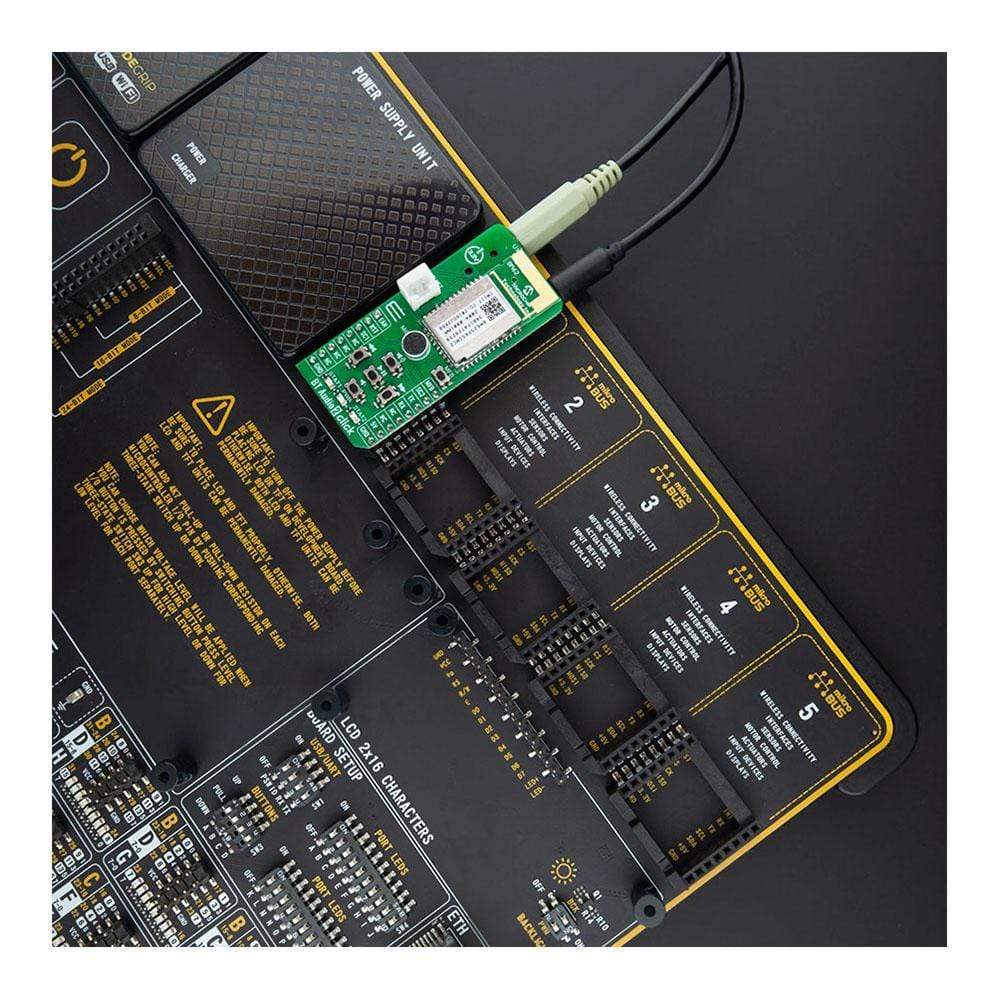
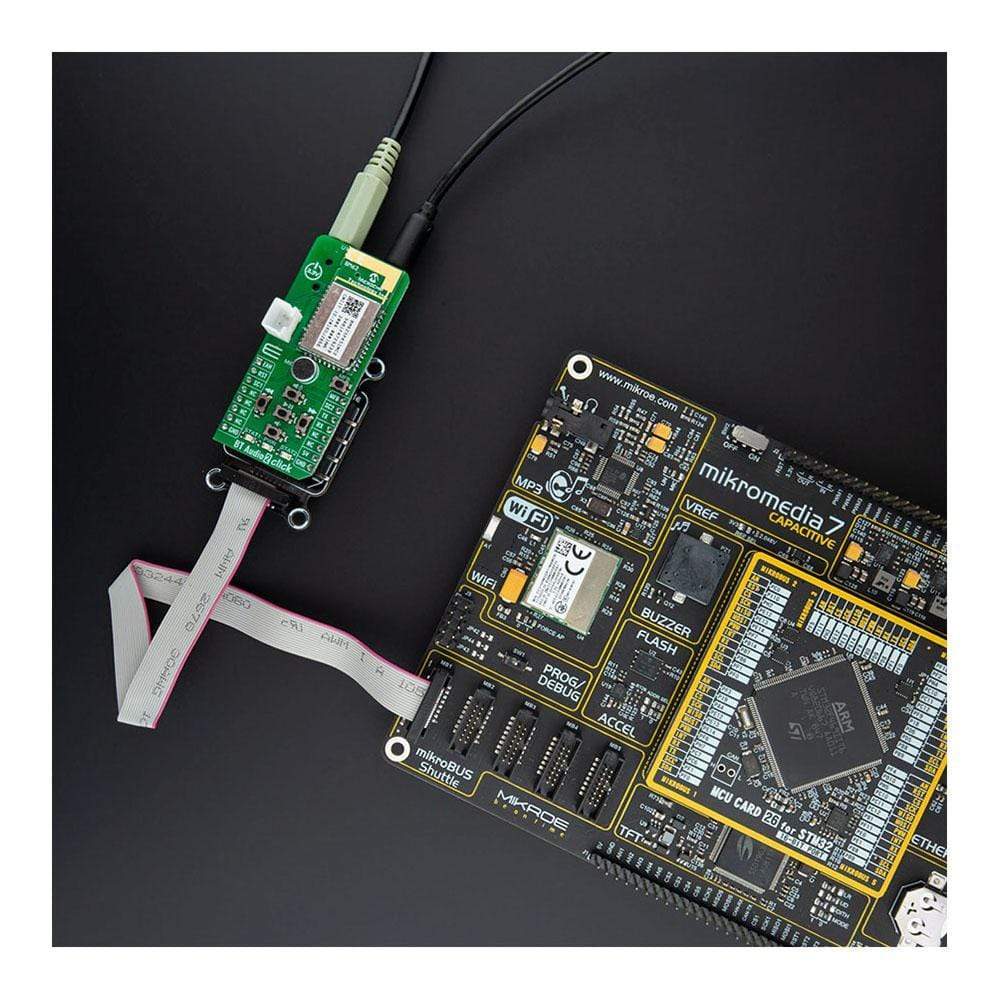
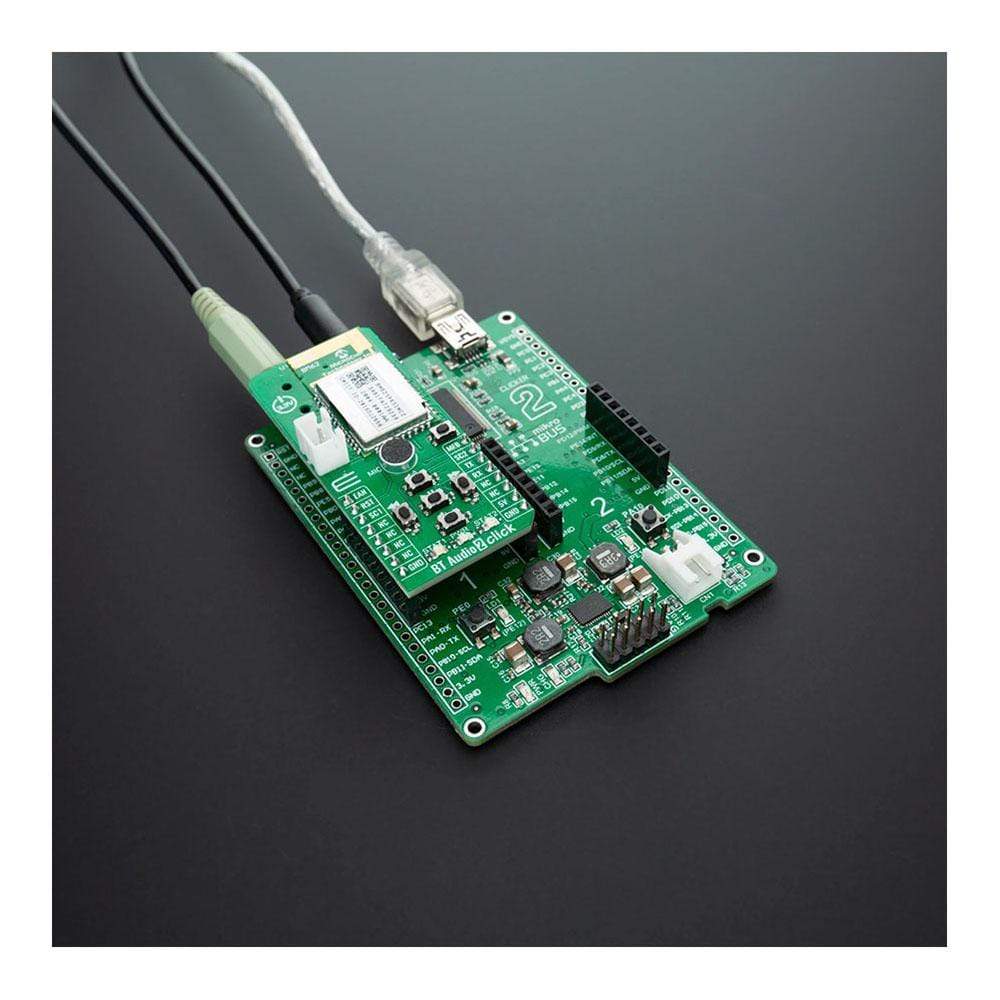
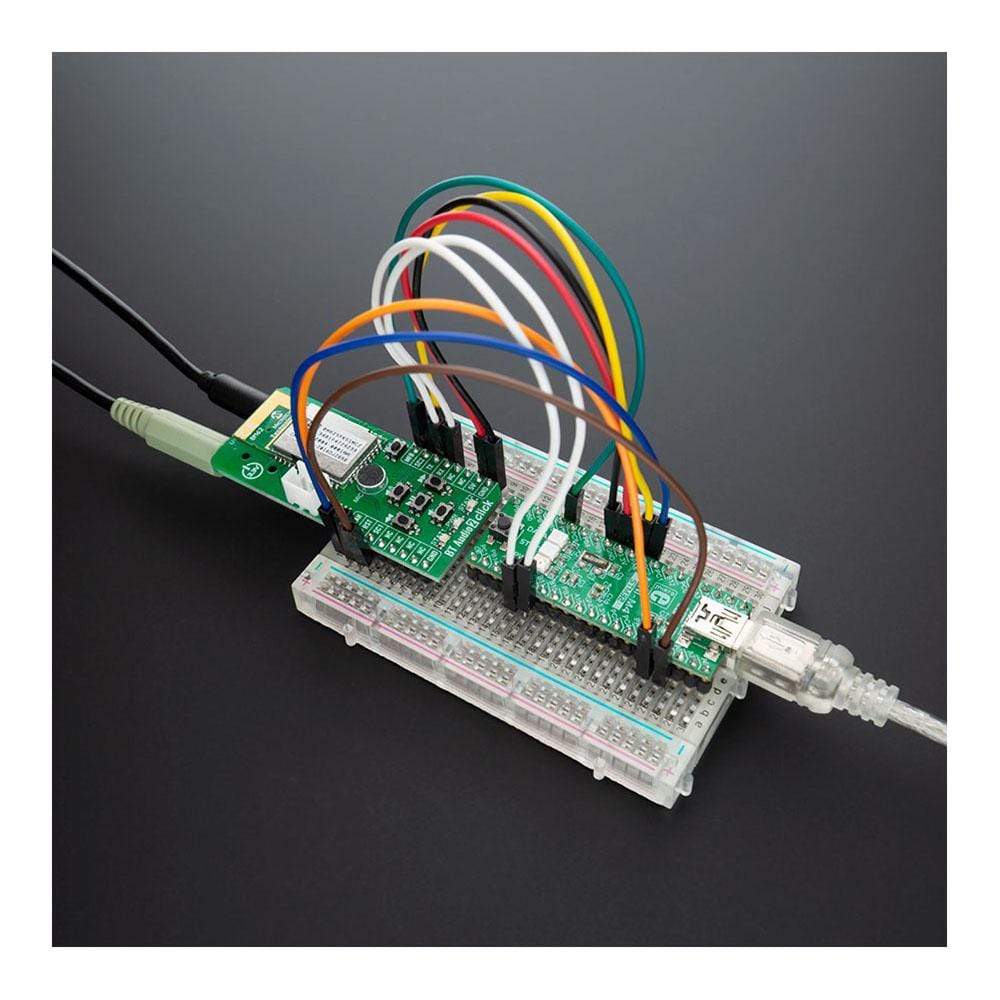
Overview
The BT Audio 2 Click Board™ is Bluetooth audio stream add on board based on the BM62 module from Microchip. It's a Stereo Audio module that is fully qualified Bluetooth v5.0 dual-mode (BDR/EDR/BLE) to be added in any wireless audio and voice application.
With features like high resolution up to 24-bit, 96 kHz audio data format, Bluetooth Low Energy data rate up to 1Mbits/s, the connection of two hosts with HFP/A2DP profiles simultaneously, seamless serial data over UART interface and many more it's a perfect solution for applications like portable speakers and headsets.
Downloads
Le Carte à clic BT Audio 2™ est un module complémentaire de flux audio Bluetooth basé sur le module BM62 de Microchip. Il s'agit d'un module audio stéréo entièrement qualifié Bluetooth v5.0 double mode (BDR/EDR/BLE) pour être ajouté à n'importe quelle application audio et vocale sans fil.
Avec des fonctionnalités telles qu'une haute résolution jusqu'à 24 bits, un format de données audio 96 kHz, un débit de données Bluetooth Low Energy jusqu'à 1 Mbits/s, la connexion de deux hôtes avec des profils HFP/A2DP simultanément, des données série transparentes sur l'interface UART et bien d'autres, c'est une solution parfaite pour les applications telles que les haut-parleurs et les casques portables.
| General Information | |
|---|---|
Part Number (SKU) |
MIKROE-4117
|
Manufacturer |
|
| Physical and Mechanical | |
Weight |
0.021 kg
|
| Other | |
Country of Origin |
|
HS Code Customs Tariff code
|
|
EAN |
8606018717736
|
Warranty |
|
Frequently Asked Questions
Have a Question?
Be the first to ask a question about this.


